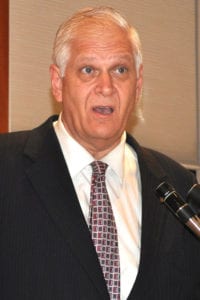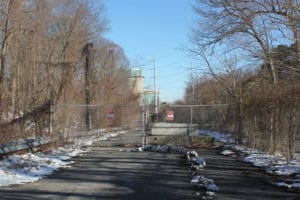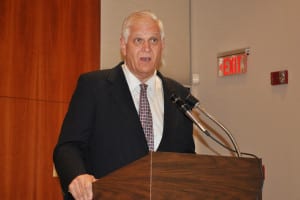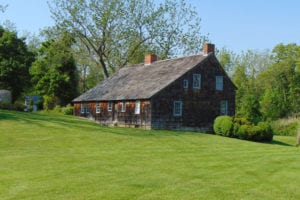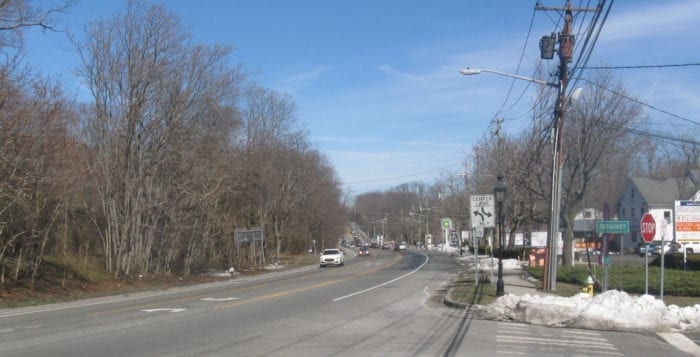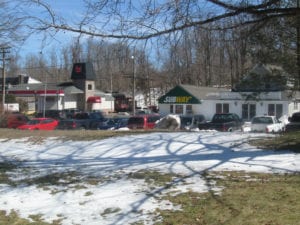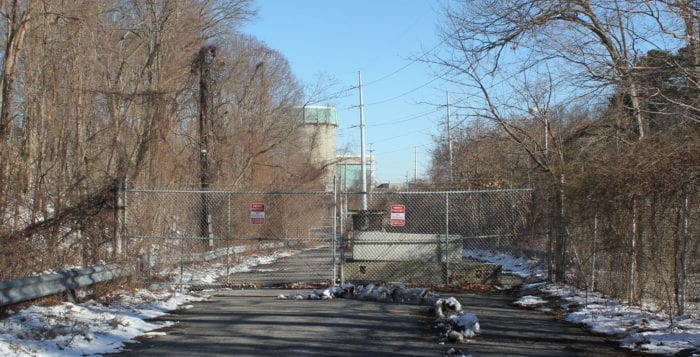An idea decades in the making could take a major step forward by the end of 2018.
It still may be years before electrification happens, if it ever happens at all, but momentum is building toward funding being secured for a study determining the feasibility of electrifying the Long Island Rail Road on the Port Jefferson line from Huntington to the stations east by the end of this year.
Mitchell Pally, the Suffolk County representative on the Metropolitan Transit Authority’s board of trustees, said the LIRR has already appropriated funds to support the study, adding state Sen. Ken LaValle (R-Port Jefferson) has also succeeded in appropriating state funds toward the plan.
“The support of the communities involved is essential to making this work,” Pally said in an interview. “The railroad is very supportive.”
Community support for exploring the possibility of electrifying the line, which currently allows trains to run on diesel fuel east of Huntington, has been building in recent years, although the idea has been on the radar for North Shore residents at least as far back as the 1980s.
Anthony Figliola, an East Setauket resident, former Brookhaven Town deputy supervisor and vice president of Empire Government Strategies, a company that provides strategic counsel on governmental relations and practices to municipalities, has been leading a community coalition advocating for a feasibility study for about the last year, he said. The group, which Figliola said has been informally calling itself the North Shore Business Alliance, has been lobbying elected officials and community organizations like civic associations and chambers of commerce throughout the relevant territories in an effort to build public support for and attention on the idea. Figliola said he hopes the funding for a study will be in place by the end of the year. The study is expected to cost approximately $12 million, he said.
“It’s ripe, the community wants it,” Figliola said. “We’re very grateful for all that Mitch is doing to advocate on behalf of this.”
Figliola identified Charlie Lefkowitz, vice president of the Three Village Chamber of Commerce and real estate developer, as one of the other community members leading the charge for electrification.
“It’s a long time coming,” Lefkowitz said of progress on the feasibility study. “It was a collaborative effort on many fronts. The direct beneficiaries of it will be the communities.”
The study would examine how much faster trains on the North Shore line would reach Penn Station in Manhattan with electrification from Port Jeff, select a new rail yard to house the electric trains among other logistical particulars. Currently, the LIRR rail yard is off Hallock Avenue in Port Jefferson, though several officials have indicated electrification would require the relocation of that yard and the Port Jeff train station. The former site of Lawrence Aviation Industries has been suggested as a possible new rail yard and train station.
On April 4 Huntington Town Supervisor Chad Lupinacci (R), Brookhaven Town Supervisor Ed Romaine (R) and Smithtown Town Supervisor Ed Wehrheim (R) sent a joint letter to the New York State Legislature’s Long Island delegation to express their support for the feasibility study due to potential economic and environmental benefits. They cited that the Port Jefferson and Huntington branch lines have the highest ridership, about 18.7 million annually, of any line in the LIRR service territory, according to the most recent LIRR Annual Ridership Report released in 2015. Figliola said his coalition had lobbied for the support of the three supervisors.
“I think it has legs,” state Assemblyman Steve Englebright (D-Setauket) said of electrification. “It’s such a good idea that I think it should happen.”





